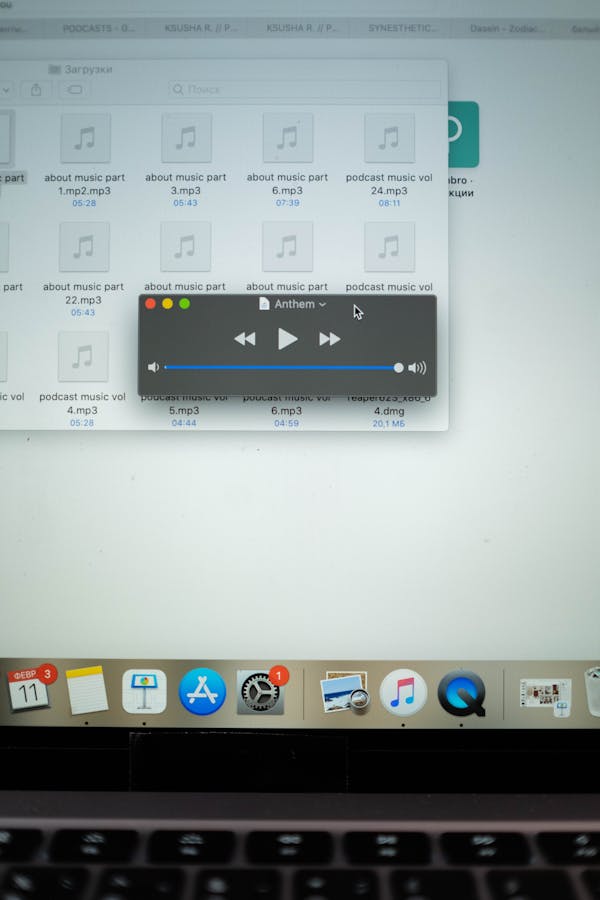Converting MP3 audio to SRT subtitles no longer requires hours of manual work. With streamlined online tools, you can upload your audio and receive accurate, time-coded subtitles within minutes. This quick process supports various audio and video formats, making subtitle creation both efficient and accessible for content creators and professionals alike.
Effortless methods to convert MP3 audio to SRT subtitle files
With automated tools now available, finding clear steps to Convert MP3 audio to SRT has never been easier for users seeking fast, accurate subtitles from spoken content. Upload your MP3 file using trusted online conversion platforms—artificial intelligence instantly transcribes the speech, synchronizes timing, and enables you to download a ready-to-use SRT file within seconds.
Also read : Transforming Visitor Engagement: Innovative AI Applications in UK Museums
Online solutions such as Transcri streamline this process: after uploading your MP3, the interface handles speech-to-text conversion with remarkable accuracy. Features like multilingual support, speaker identification, and format flexibility—offering output in TXT, DOCX, and SRT—enhance usability even for complex tasks. Free tiers typically allow a few minutes of transcription, while longer or larger files require a subscription.
If you’re after flexible and secure file processing, Zamzar offers conversion for MP3 and numerous other formats. The process remains accessible and requires no specialized technical knowledge: choose your source, pick SRT as the output, and download the result. For more robust needs, AI-powered dedicated applications even tackle multiple languages, differentiate speakers, and are suitable for diverse projects from interviews to podcasting or educational resources.
Also read : Revolutionizing UK Elections: The Role of Blockchain Technology in Combating Fraud
These versatile methods are designed for efficiency and accuracy, minimizing manual intervention and supporting a wide range of user needs.
Step-by-step guide to converting MP3 to SRT subtitles
1. Uploading MP3 audio
To begin, locate your MP3 file using your device’s browser. Most platforms enable you to drag and drop the file directly, or opt for a traditional upload button to select your file from a folder. Free users may encounter a file size limit—usually 10 MB—or a duration cap, commonly around 8 minutes.
2. Automatic transcription processes
Once the file is uploaded, AI-based speech-to-text conversion is triggered automatically. This process uses machine learning algorithms to recognize spoken words and generate time-coded text. The software aligns each segment of text with precise points in the audio, supporting multiple languages and automatic speaker identification on some platforms. Transcription typically completes within seconds, but longer or larger files may require more time.
3. Downloading SRT files
At completion, a preview of the output may be available. You can then select “Download” to save the generated SRT subtitle file to your device. This file contains both the transcript and timing codes essential for synchronizing subtitles with video. Most services also support exporting to alternative formats such as TXT or DOCX for convenience.
Comparing top tools and services for subtitle generation
Zamzar excels in format support and reliability, accommodating more than 11,000 file types. Its strength lies in versatility—users can convert MP3 files and other popular audio formats to SRT subtitles or export as DOCX, TXT, and more. For free users, uploads are capped at 5 MB, with secure file handling and a 24-hour window for downloads. Paid users benefit from larger size allowances and custom storage durations. Zamzar’s environmental commitment and long-standing trust from institutions add reassurance for both professional and personal users.
Transcri leverages AI-powered transcription for fast, accurate subtitle generation. Users can drag-and-drop files in 50+ languages, benefiting from speaker identification, multilingual transcription, and export options like SRT, VTT, and DOCX. The free tier allows 15 minutes of transcription and up to 10 MB per file. Paid options give access to longer files, advanced translation, and batch processing. Transcri’s browser-based platform offers convenience and accessibility globally, supporting seamless subtitle creation for various needs.
When comparing free vs paid subtitle tools, free tiers suit occasional or short tasks, while subscriptions cater to heavier workloads, batch processing, and integration with video editing platforms. Both Zamzar and Transcri empower users to efficiently create subtitles for accessibility, learning, or content distribution.
Enhancing Transcription Accuracy and Subtitle Editing
Maximizing transcription accuracy starts with high-quality audio input. Clear speech, minimal background noise, and proper microphone placement substantially reduce errors in automatic speech recognition. Audio files with interruptions, overlapping voices, or excessive background sounds often challenge even the most advanced speech recognition technology.
When auto-generated transcripts contain inaccuracies, manual subtitle editing becomes critical. Use subtitle editors to adjust timestamps, ensuring subtitle text aligns perfectly with spoken words. Accurately labeling speakers and segmenting dialogue enhances readability, particularly for complex content or multiple speakers. Editing tools simplify this process, letting you playback audio and tweak line breaks or durations for better viewer experience.
Synchronization is essential for effective subtitles. To improve subtitle-to-audio alignment, utilize waveform views and real-time preview features in subtitle editors. Methods such as aligning subtitle start times with sentence beginnings, and avoiding overlapping captions, contribute to natural pacing and clarity.
For best results, always review and adjust editing auto-generated transcripts before finalizing. This ensures correct timing, fewer errors, and logical text breaks—making the subtitles useful for accessibility, language learners, and all viewers requiring precise, reliable on-screen text.
Exporting, formatting, and using SRT subtitle files
Precise steps for exporting SRT files begin with uploading your MP3 audio to a platform supporting automated transcription and subtitle generation. Popular tools will process your file using speech recognition technology, then quickly generate an SRT file containing both the subtitle text and timing information. Once processing is finished, you just download the SRT file to your device for integration with your video projects.
A variety of subtitle format options exist. SRT remains the most universal and straightforward, offering broad compatibility with video editors and players. VTT (WebVTT) is favored for web video and interactive features, while DOCX or TXT are best for reviewing or editing full transcripts outside of video workflows. Each format has advantages:
- SRT: Broad software support and simple structure
- VTT: Extra styling and metadata for web videos
- DOCX/TXT: Easy viewing or text editing
Compatibility is a priority for successful subtitle use. SRT files can be loaded into virtually any video player or editing suite. Subtitle formatting standards, such as correct timing, character limits per line, and encoding (UTF-8), help ensure accurate display. Customizing subtitle appearance—like font, color, or size—depends on the video platform, but can typically be adjusted within the player’s settings or editing software, making your content accessible and visually clear.
Key considerations for choosing a transcription and subtitle solution
Precision and recall matter most when evaluating AI-powered transcription and subtitle tools. Precision is defined as the fraction of relevant instances among the retrieved instances; recall is the fraction of relevant instances that were retrieved. In SQuAD-style assessment, this means the accuracy of transcribed words (precision) and completeness relative to the audio (recall).
Balancing accuracy, speed, and cost is crucial. Free solutions allow short file or time-limited transcription, such as 8 to 15 minutes for MP3 files. Paid platforms relax these restrictions, handling longer or larger files and sometimes offering discounted packages for heavy users. While free platforms help users test quality and evaluate workflows, paid services tend to deliver higher accuracy, export flexibility, and more robust support—important for professional video editors and large projects.
Accessibility features include support for over 50 languages, automatic detection of spoken language, and subtitle export options compatible with many video editors. Choosing a tool with multi-language transcription ensures subtitle inclusivity for international or multilingual audiences, and easily downloadable SRT and DOCX files expand utility for both learners and viewers with hearing impairments.
Security and privacy controls should not be overlooked—top solutions secure files and provide options for manual file deletion, respecting data protection needs of enterprises and individual creators. Reliable technical support becomes increasingly critical as project complexity grows.











